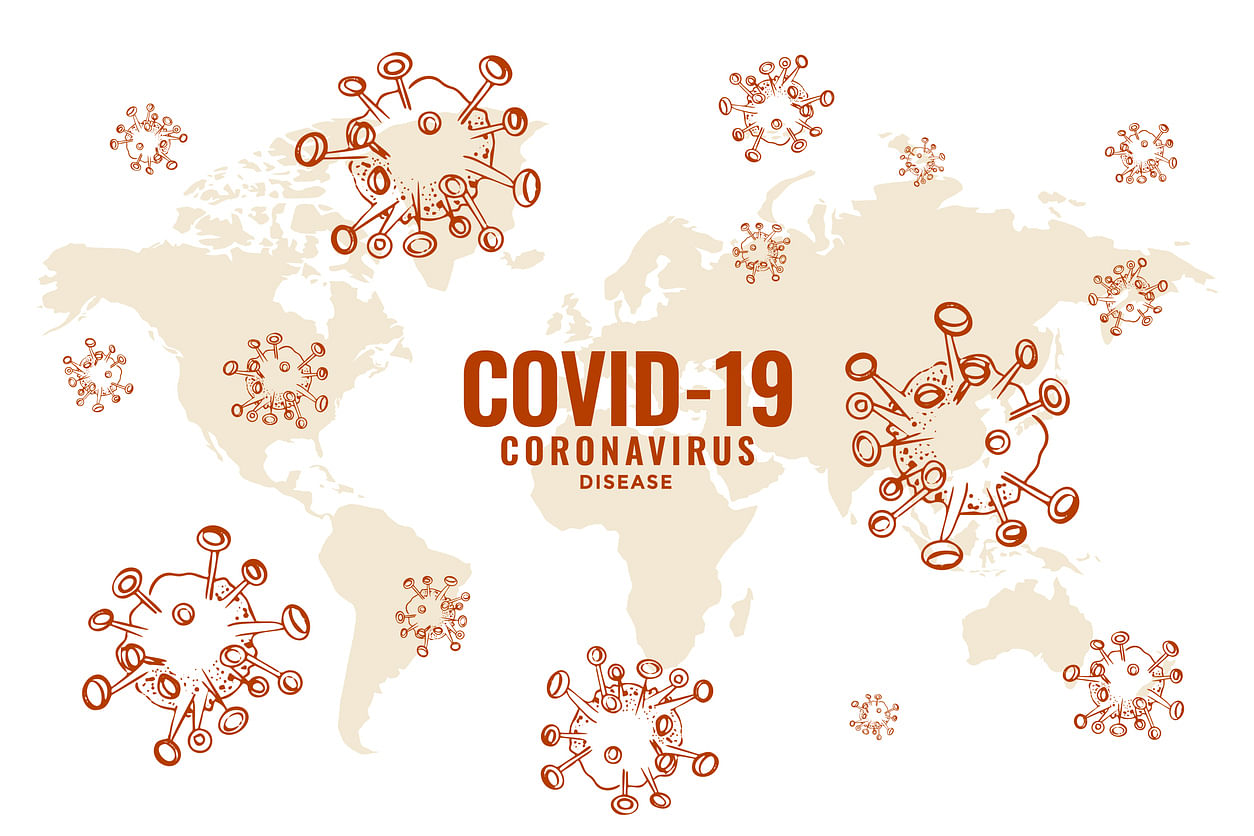
It is hard to eradicate infectious diseases. It took decades of vaccination to eradicate smallpox. Polio vaccines have also been available for decades, but polio is still endemic in some countries. No fewer than five influenza pandemics have shaken the world in the last 150 years and influenza is still with us, even though an influenza vaccine has also been available for decades.
So what makes anybody think that COVID-19 will go away anytime soon?
What is necessary for a pandemic to die down? Perhaps the best answer is that herd immunity must develop.
Developing herd immunity
What is herd immunity? It is when a large percentage of the population has been exposed to the disease and has become immune to it. So, if somebody who is not immune gets the disease, the disease can’t go around much because people who are contacts of the infected person are already immune. Usually, about 70 percent of the population needs to be immune before herd immunity becomes a meaningful protection against the spread of the disease.
How does herd immunity develop? Before vaccines became available, this would happen by the spread of the virus through the population. A large number of people would be infected, many would die, but most would survive and become immune to the illness.
After vaccines became available, herd immunity developed through universal immunisation, or at least through mass immunisation programs if the entire population could not be immunised. In this context, it must be remembered that even in developed countries about five percent of people, called anti-vaxxers, refuse to have their children vaccinated. This is why, for example, outbreaks of measles continue to be reported in North America and Europe.
Vaccination is a desirable method for the development of herd immunity. However, there is no COVID-19 vaccine presently available.
If the COVID-19 pandemic has to end, it will end only when herd immunity develops, and that will happen either after at least 70 percent of the population has been exposed, because the virus has run through the population, or after universal immunisation has been achieved with an effective vaccine against the disease.
Vaccine will take time
There are about 115 vaccines presently under development of which at least six have reached the stage of testing in humans. It usually takes 5-10 years for vaccine development. Even if a COVID-19 vaccine is developed at the fastest possible pace, safety speed breakers will line the way. After all, it would not do for billions of humans to be vaccinated only to find that the vaccine has unintended consequences in a small percentage of persons. A small percentage of billions of humans translates into a very large number of humans.
The latest estimate is that it could take at least 18 months for a COVID-19 vaccine to reach us. That’s a long time to wait for vaccine-associated herd immunity. So we must learn to live with the idea that COVID-19 will be with us for a long time ahead.
Learning to live with COVID-19 must involve solutions that reduce COVID-19 deaths without disproportionately increasing morbidity and mortality from other causes.
Adding COVID-19 to list of existing diseases
Lockdown is good to the extent that it slows the spread of the virus and buys time until a treatment is discovered, or until a vaccine becomes available. Unfortunately, discovering a treatment or making a vaccine for a new disease is not something that is easily done; HIV/AIDS, SARS, MERS, and Ebola are viral diseases that are excellent examples of this. And as already stated, the vaccine is still far away.
Lockdown is bad to the extent that it denies patients with other diseases the opportunity to obtain treatment for those diseases, and so people will suffer and die from it. Lockdown is particularly problematic where it harms the economy, thereby compromising the funds available for healthcare. Even before lockdown, a Global Burden of Diseases study found that, in India, nearly 2,000 children aged 0-5 years were dying of malnutrition each day. In a lockdown-affected economy, the number of malnutrition deaths would be far higher.
These 2,000 deaths daily are only for malnutrition and only for children in a narrow age band. What about other communicable and non-communicable diseases, and persons in other age bands, most especially the elderly who already have a heavy burden of diseases accumulated during their lifetime?
If the lockdown is lifted, people will die as COVID-19 spreads. If the lockdown is extended, people will die of other causes. This is the harsh new reality. We must add COVID-19 to the list of cardiovascular diseases, cancers, malnutrition, and other conditions that are currently leading causes of death.
There is a slender hope. COVID-19 does not seem to be devastating India, as it has devastated Europe and North America. One hopes that this trend holds true as lockdown is lifted.
(Dr Chittaranjan Andrade is Dean, National Institute of Mental Health and Neurosciences, Bengaluru)
The views expressed above are the author’s own. They do not necessarily reflect the views of DH.